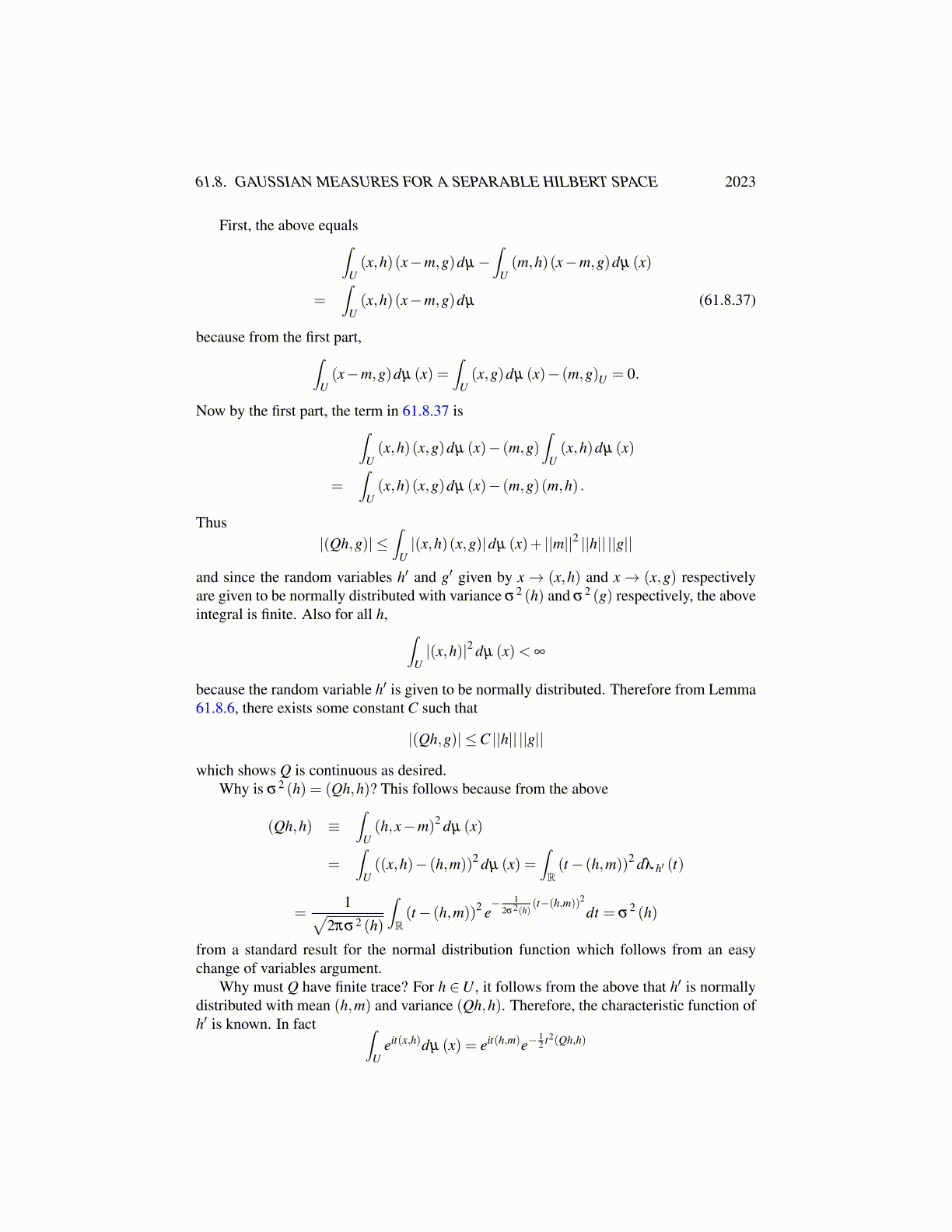
61.8. GAUSSIAN MEASURES FOR A SEPARABLE HILBERT SPACE 2023
Proof: I need to show that for each h∈Uk, the integral in 61.8.36 exists. From this it isobvious it is k− linear, meaning linear in each argument. Then it is shown it is continuous.
First note|(h1,x) · · ·(hk,x)| ≤ |(h1,x)|k + · · ·+ |(hk,x)|k
This follows from observing that one of∣∣(h j,x)
∣∣ is largest. Then the left side is smaller
than∣∣(h j,x)
∣∣k. Therefore, the above inequality is valid. This inequality shows the integralin 61.8.36 makes sense.
I need to establish an estimate of the form∫U|(x,h)|k dµ (x)<C < ∞
for every h ∈U such that ||h|| is small enough.Let
Un ≡{
z ∈U :∫
U|(x,z)|k dµ (x)≤ n
}Then by assumption U = ∪∞
n=1Un and it is also clear from Fatou’s lemma that each Un isclosed. Therefore, by the Bair category theorem, at least one of these Un0 contains an openball, B(z0,r) . Then letting |y|< r,∫
U|(x,z0 + y)|k dµ (x) ,
∫U|(x,z0)|k dµ (x)≤ n0,
and so for such y,∫U|(x,y)|k dµ =
∫U|(x,z0 + y)− (x,z0)|k dµ
≤∫
U2k |(x,z0 + y)|k +2k |(x,z0)|k dµ (x)
≤ 2k (n0 +n0) = 2k+1n0.
It follows that for arbitrary nonzero y ∈U
∫U
∣∣∣∣(x,(r/2)y||y||
)∣∣∣∣k dµ ≤ 2k+1n0
and so ∫U|(x,y)|k dµ ≤
(2k+2/r
)n0 ||y||k ≡C ||y||k .
Thus by Holder’s inequality,
∫U|(h1,x) · · ·(hk,x)|dµ (x) ≤
k
∏j=1
(∫U
∣∣(h j,x)∣∣k dµ (x)
)1/k
≤ Ck
∏j=1
∣∣∣∣h j∣∣∣∣